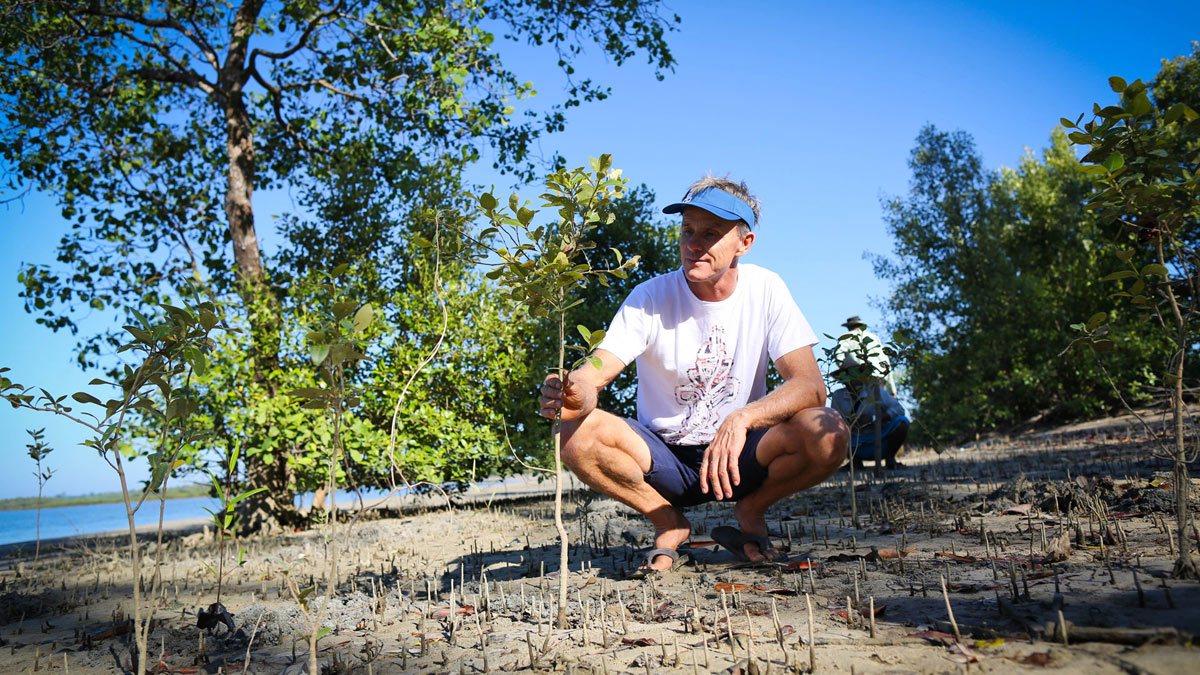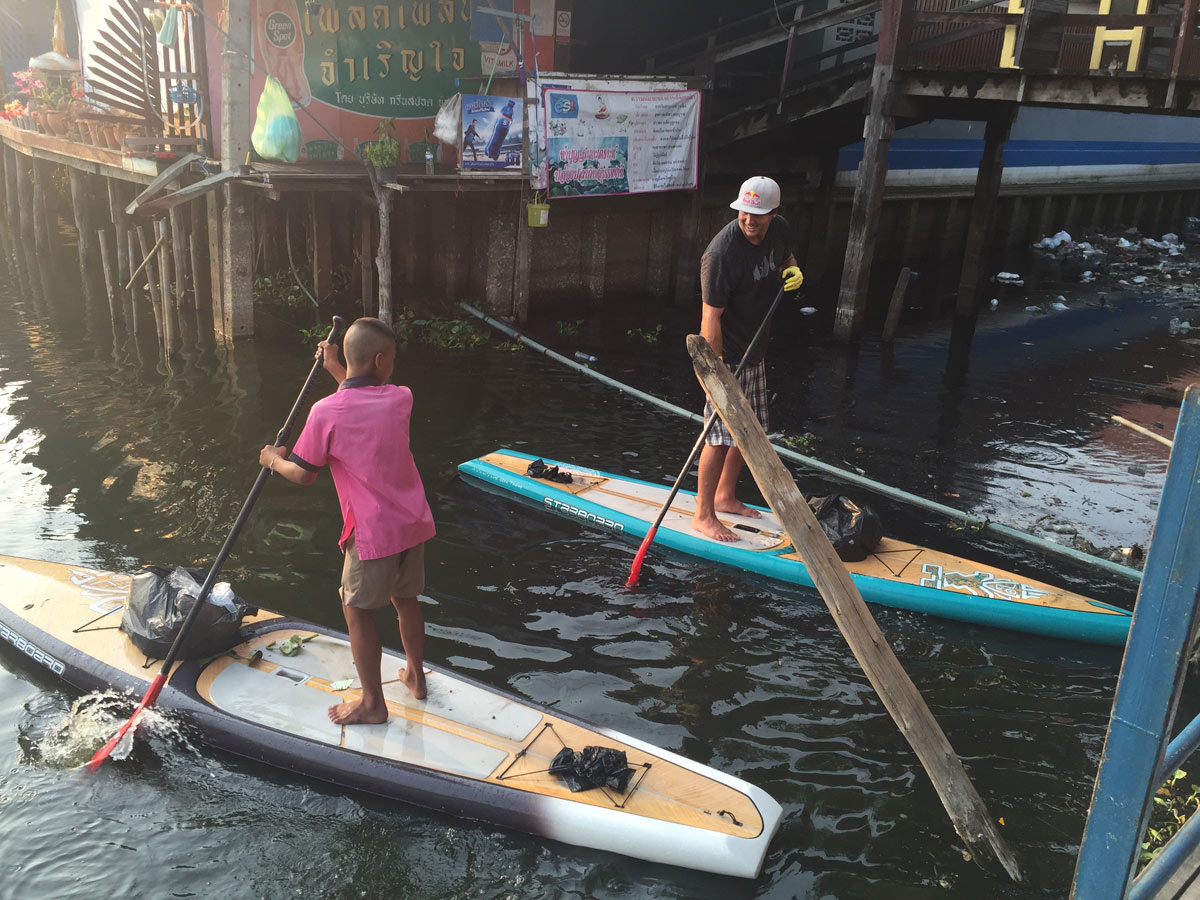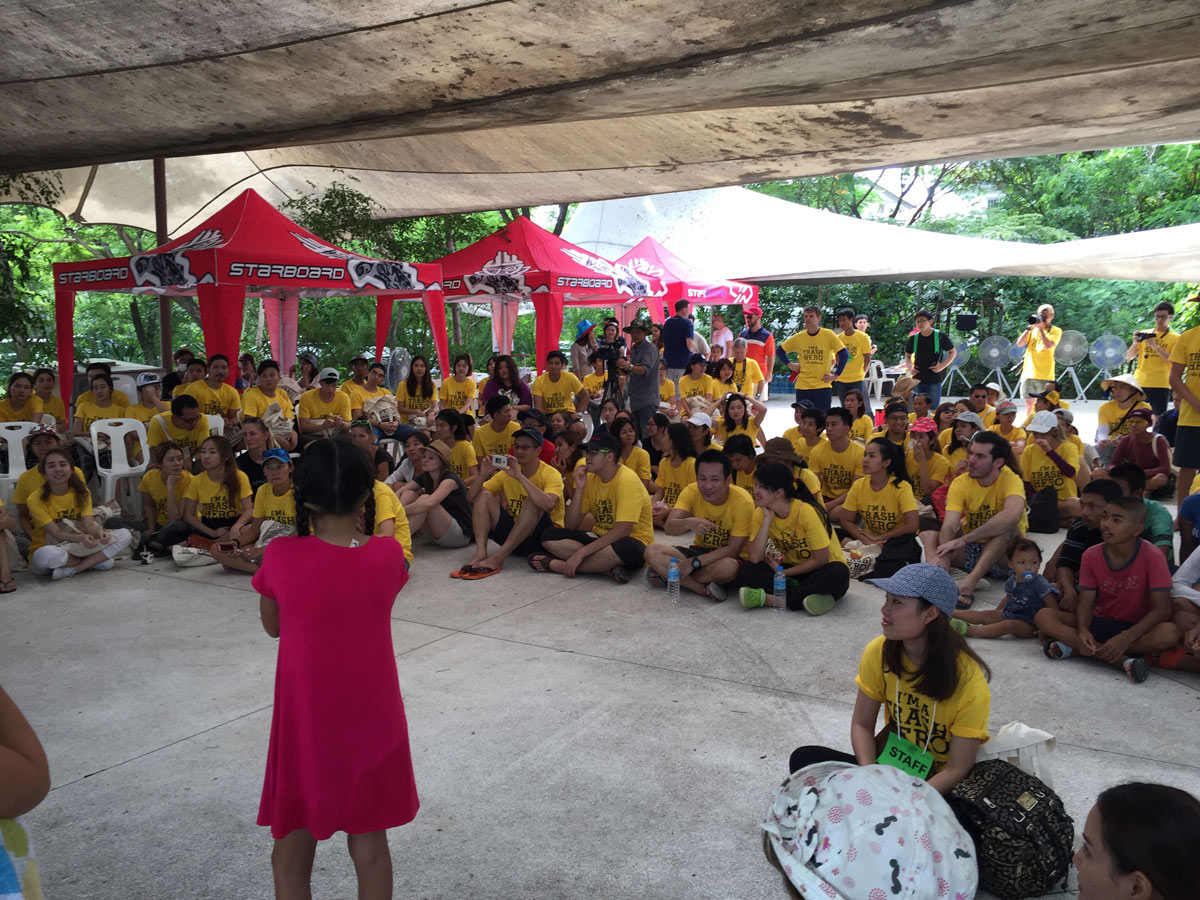Starboard has recently joined the Ecoboard Project program by Sustainable Surf and made a first step to reduce their carbon footprint and to become carbon neutral by end 2018.
We hooked up with Svein Rasmussen, founder and chief of Starboard, to speak about this large step towards a more sustainable production and the future ideas.

Continentseven: Starboard has recently joined the ECOBOARD Project program by Sustainable Surf. What is it about and why did you decide to join?
Svein Rasmussen: The ECOBOARD Project (EBP) program is designed to help individuals easily choose a high-performance sustainable surfboard, made with the latest advancements in green chemistry and renewable materials, that can dramatically reduce the surfboard’s environmental and toxic impact on the environment. The EBP is the world’s first and only independent 3rd party consumer facing “eco-label” for water sports boards including: windsurfing, surfing, SUP, kitesurfing, wakeboarding and otherwise. We choose to join as we love the direction Sustainable surf is going with the EBP. This is really cool stuff.
Continentseven: How and in which fields will Starboard work more eco friendly from now on (production, shipping, etc.)?
Svein Rasmussen: So Starboard is now rising to the challenge of protecting our oceans in the only way we know how with innovation & quality. We will initiate work in a variety of fields and start with calculating our company and our products carbon footprint, then develop strategies on how to best reduce it. It all starts with our boards and how we can gradually exchange the petroleum base in them towards bio based and recycled materials.
Some materials are relatively easy to exchange while others take more work and consideration. A more intelligent choice of paint, pads, inserts, resin and packaging should be relatively easy to move forward with. The EPS core and PVC sandwich layer is more of a challenge and will take a little longer time. We will outfit our office and parking lots with Solar. We also plan to have solar floats on Lake Taco where our development center is situated. The floats would be made out of recycled EPS, infused with bio resin and painted with bio paint. In the future we could hopefully help our supply and distribution partners investing into solar or other renewable energy sources. On the transport side we will map out shipping companies that are more pro active in progressing towards alternative energies and avoid shipping by air.
We further aim at balancing out the remaining carbon footprint by planting Mangroves. Our target is to become carbon neutral by end 2018, an ambitious goal knowing that we are in a business where we produce and ship large composite items, quite different from more service oriented companies that already might already be carbon neutral.

Continentseven: Will this collaboration with Sustainable Surf have an effect on all of your board ranges?
Svein Rasmussen: All our windsurfing boards and paddle boarding will be built with bio resin. The only exception are boards built with foaming epoxy, this would be 3 DX boards and the GO/ Start boards. We plan to introduce plant based resin also in these lines as soon as the product is fully developed and verified for commercial production.
Continentseven: Was there any special situation you realized it’s about time to take care on the environment more?
Svein Rasmussen: Back in the late 70s we had the first climate change discussions in Norway and Arne Fjørtoft who was leading the green party (chairman), Venstre, was the first person in Norway to voice his concern in the parliament. These were early days and Arne was by the parliament suggested to rather have such discussions with the meteorological institute instead. I was a teenager at the time and quite concerned knowing that our emission levels would continue to grow with most people not realizing the magnitude. Years then passed, I was just having fun windsurfing and later loving to develop boards and other gear.
Then some 3 years ago our group advisor Tor Winswold (now passed away) recommended me to broaden my view and become a bit more useful. I joined him to an Orchid and Mangrove conference in Yangon, Myanmar, interestingly organized by Worldview founder Arne Fjoertoft, participants would include the former environmental minister to the EU, Margot Wallstroem, representative from various embassies there and the local Mangrove experts. Seeing how engaged this crew was I started to look at how our little company could step it up and move forward together with our riders and networks. I went back to my home town Arendal in Norway for the summer just to find out that there was an UNEP brief with the UNEP President visiting GRID-Arendal (e.n. GRID-Arendal is a centre collaborating with the United Nations Environment Programme (UNEP), supporting informed decision making and awareness-raising)
Listening to the scientists and the politicians I was struck by the fact that they all agreed about the environmental challenge by that they did not know how they could get the peoples votes to make changes fast enough as it simply was not yet cool to speak up on behalf of the environment.
In our sports the environment obviously is the most exciting part, so in our arena we would all be ready to engage and speak up.
Continentseven: What does this step to a more eco friendly production mean for Starboard, the windsurfing market and the future of windsurfing?
Svein Rasmussen: We are really just getting started, but we are fully committed to see the environmentally conscious development as the priority for our brand. I would love to see windsurfers leading the rest of the sports world towards a more intelligent future, then see the sports world motivate the rest of the planet to get on board and protect what they love.
I would love to see windsurfers leading the rest of the sports world towards a more intelligent future, then see the sports world motivate the rest of the planet to get on board and protect what they love. Svein Rasmussen
Continentseven: You already used renewable resources for your boards, like wood, in the past. What are the reasons you will not use wood anymore and replace it by carbon?
Svein Rasmussen: Yes, Starboard pioneered Wood Technology in 1994 with the help of New Caledonian Jean-Louis Colmas who started his research on the Wood tech in 1984. I still have a cool wood board anno 1985 , it’s the only board I’ve kept after 15 years of professional windsurfing and developing loads of boards over the last 22 years. We had our best ever results with our Formula boards in wood, scoring 18 out of the top 20 places in the World Championships in the days Formula was the most popular race format.
We are doing intense research with new ways to utilise wood, both as veneer lamination and as sandwich material to replace PVC. We did however not manage to evolve the wood sandwich development program to our ambitious level within the development frame and this year unfortunately slipped. We continue the research and for 018 we plan to be back with a much evolved wood board technology bringing that technology to the very next level. For the 017 season, we went with UltraCore and we’ve worked with our UltraCore supplier to improve manufacturing efficiency. This reduced the carbon footprint of UltraCore by some 30%.

Continentseven: Will you be able to keep the price of the products or will the prices increase?
Svein Rasmussen: Great question! I am very excited about spending time on ensuring that environmentally friendly products should not only be better, but also totally value oriented. Initially the bio resin pricing we were looking at simply was not „user friendly“ and we introduced various bio resin suppliers to create a race” for meeting the sweet spot price wise while ensuring that the molecules would be matched one by one in properties relative to the currently used resin. This is a critical arena to play in as some of our assemblers do not appreciate the efforts we engage into in regards to their suppliers mixes and prices. However, we need to look at the big picture and keep on motivating our assembling partners to accept that brands will play an active role in future eco friendly technology development.
Continentseven: When will you present the first eco friendly boards to the public and when will it be available?
Svein Rasmussen: We are running the production now, should ship end July and boards will be in stores by September 2016.

Continentseven: What can the normal windsurfer do to be more sustainable?
Svein Rasmussen: The normal windsurfer can first of all be an ambassador for a more intelligent lifestyle as we seem to appreciate and understand the value of a healthy environment. We can encourage friends to carry water bottles, cups and avoid single use plastic items like plastic bags. We may wear clothing produced from recycled materials like the new Parley /Adidas collection with PET bottles from the Maldives. Consider installing solar roof tops and check websites providing info on how to live a sustainable life. If you smoke, always bring a little box for your and your friend’s cigarette butts as we all are tired of picking up those toxic butts. Check out recycle programs like Mafia bags where your recycled sails can be made into cool bags.
Challenge everything and ask question to your local community leaders on what their future plans are concerning sustainability and protection of the oceans. Helping us board builders figure out how we can recycle boards would be of great use. Resin manufacturers like Entropy (a company based in California) have plans to introduce resins that enables the laminates to be dissolved in apple cider vineyard allowing the fibers to be recycled. We can support companies like them and Sicomin (a French company located close to Marseille), who do their best to develop a more intelligent future.
Continentseven: This step is a first step. What are your wishes for the future?
Svein Rasmussen: We really are just getting started and we want to motivate our riders, customers and the entire water sports community to work together sharing concepts on how we can protect our oceans and have a lot of fun while doing it. Starboard is known for a generous offering board model wise and we are using the same strategy in the environmental arena as there are many opportunities.
We start work with organizations like Parley, Watertrek and Sustainable Surf in developing new technologies from renewable and recycled materials while initiating our clean up campaigns like Trash hero Bangkok. Imagine the plastic (Pet bottles ), EPS (styrofoam) and EVA (flipflops) collected from beaches by Trash Hero, one day ending up in the boards that will power Philip Koster and the rest of our dream team into PWA events .
We can create powerful stories inspiring other industries to follow suit. We support Mangrove projects as the Mangrove tree is capable of absorbing up to 1 ton CO2 over 20 years. Mangrove forests can increase fish production up to 50% while creating coastal protection shields against Tsunamis and storms in low lying areas.
In Myanmar we plan to plant 1 million Mangroves in the Thor Heyerdahl Park and help support lobby to increase the Myanmar Mangrove park area to 100,000 acres, making room to plant up to 1 billion trees capable of absorbing 1 billion CO2 over 20 years. Could one even start with helping events like the Olympic games become carbon neutral to create awareness around the intelligent opportunities ahead?
Tsunekazu Takeda is already on a sustainable path with the green Olympic strategy in Tokyo but how insanely cool would it be to take that project one step further? We have not yet shared many of our activities, like the schools we build in Myanmar villages since years, hosting up to up 400 students, and the year round supply of medicine for the clinic constructed there. The nature protection research and environmental campaigns we help initiate in Dawei will be stories to tell into he future. I believed engagement was enough and did not realize that to share engagement is even more vital, so we will become better at telling our story.
Let’ s see how the new 017 non plastic packaging will be accepted. Will windsurfers agree that their boards no longer need a dust protection film around the boards and that the bubble wrap can replaced by cardboard?
We will take a few steps at the time and count on windsurfers taking the lead, we are really just getting started…
Continentseven: Thanks for the interview and let’s hope more people will follow a greener lifestyle in the future.

Why producing sustainable eco-boards in the todays quality instead of producing SUSTAINABLE AND DURABLE ECO-BOARDS.
Better to trash a board after 3 seasons instead of one, no matter if eco or not.
That’s how the marketing works….
Imagine a eco produced witchcraft board packed in cardboard only…..
Great comments, most welcome I have not been on forums since stone age, but this stuff is for myself exciting to discuss and share opinions on. Flip Flop. Yes you are indeed right, I like it. If you have any idea about who engrained our industry is in plastic wrap / crap and how hard it is to change something as simple as the packaging with our suppliers you would laugh. We specify packaging and some suppliers simply do not get it and wonder why we should change away from plastic fantastic? When they finally get the message through they… Read more »
That’s pretty impressive. And for sure the very polarizing work of David Carson won’t be able to appeal to everyone.
Hello Svein. I truly appreciate the fact that you take a bit of time to answer some of the comments.
In your opinion, will we see in the near future alternatives to fiberglass for stratification like cork instead or Airex/Corecell or flax fibers instead of fiberglass?
Are those materials used now (marginally) in the surfboard industry would suit the higher constraints that windsurfing generates?
Likewise, cardboard surfboards are starting to arrive on the market. Would that be applicable to windsurf construction since the foam is only here to give the shape and does not endure much forces?
Hi Sven, thanks for following up! I appreciate that a candid question often leads to another one, and another… And soon it’s a proper project. I discern that the packers find bubble wrap so simple, versatile and risk free. They get a roll, tape and can wrap anything! It could therefore indeed take a substantial effort to change direction. And it is also likely that moving to cardboard could require some packaging design, even packaging machines that need to be designed themselves… All this will not be free and would need to be driven ‘in-house’ until a proper concept is… Read more »
I was pleased to read this article.
If all people did a little to help, it would be a very small effort per person. And we wouldn’t have people bringing up this nonsense all the time of ‘since we can’t do everything, why don’t we do nothing?’
In saying that, I still think there is much improvement possible in windsurfing. But this is a good first start by SB and it deserves our support
Moderating opinions devaluates this site in which we trust, C7
?? C’mon, it’s Sunday Mister Splash. Your first comment was in the spam folder.
This bio, mio, resin stuff brings tears to my eyes. Come on. Better think to change the most stomach aching logo in windsurfing=